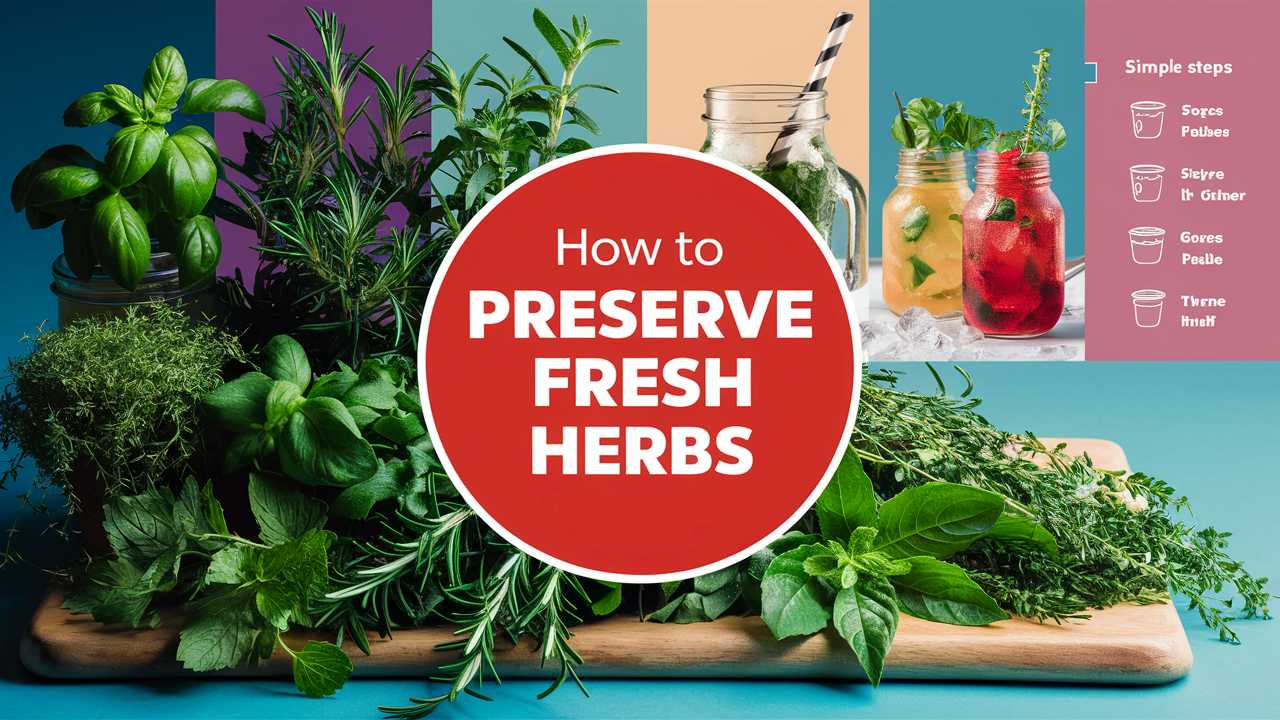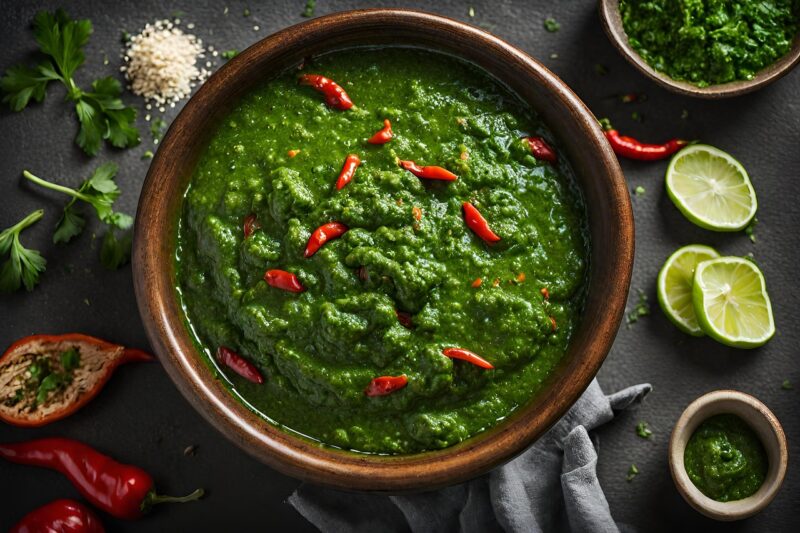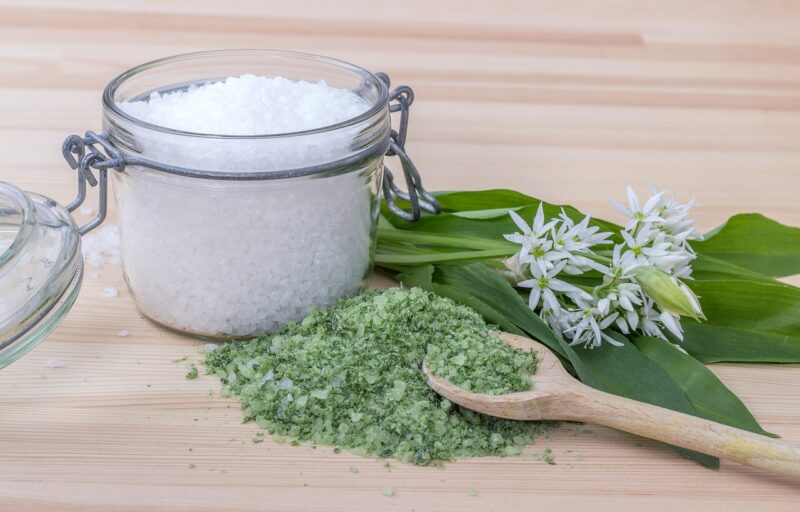In this guide, we will explore various methods to keep your herbs vibrant and full of life, ensuring you can enjoy their benefits regardless of the season.
Understanding Herb Types and Their Shelf Life
Before jumping into preservation techniques, it’s crucial to understand the types of herbs and their varying shelf lives. Fresh herbs generally fall into two categories: soft herbs and hard herbs.
Soft Herbs
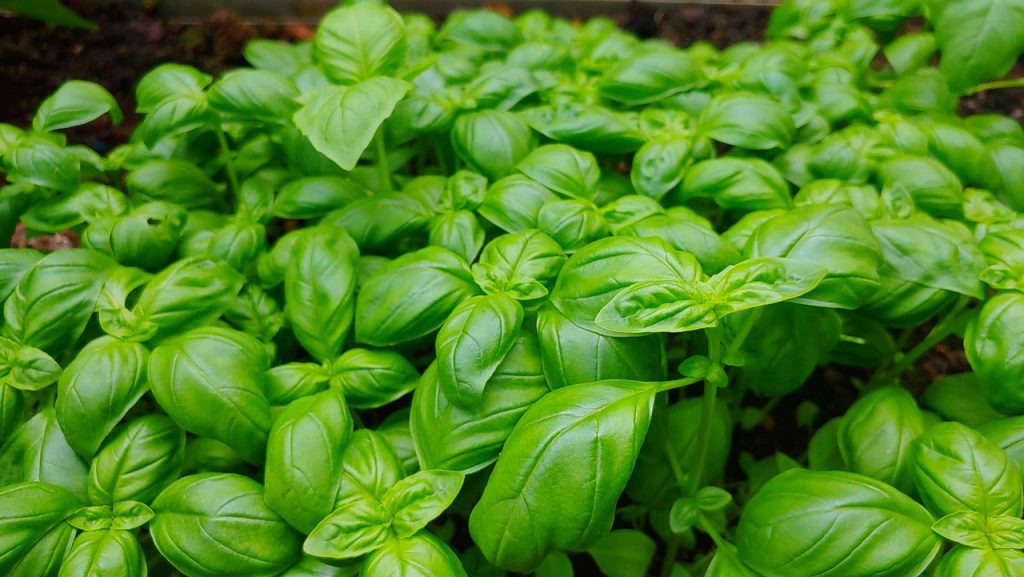
Examples: Basil, parsley, cilantro, chives, and mint.
Soft herbs are tender and aromatic, making them great for fresh salads and garnishes. They tend to wilt quickly, usually lasting only about a week when refrigerated. Their high moisture content makes them prone to decay if not stored correctly.
Hard Herbs

Examples: Rosemary, thyme, sage, oregano, and bay leaves.
Hard herbs are woody and tend to retain their flavor for longer periods. They can survive in a dry environment, which is why they can often be dried without losing their essence. These herbs typically last about two weeks to a month when kept in ideal conditions.
Understanding these differences will help you decide which preservation method works best for each herb type.
Methods for Preserving Fresh Herbs
Let’s explore various techniques for preserving those fresh herbs, focusing on easy-to-follow instructions that can integrate seamlessly into your everyday life.
Refrigeration: The Short-Term Solution

The simplest method to preserve herbs is refrigeration. Prepared properly, herbs can last up to a week or more in the fridge.
Preparation: Rinse herbs gently under cool water and pat dry with a clean towel or paper towel. Remove any discolored or damaged leaves.
Storage Options:
The Damp Paper Towel: Wrap your herbs in a damp paper towel and place them in a plastic bag. Seal the bag, leaving some air inside to avoid crushing the leaves.
Jar with Water: For soft herbs like basil or mint, place them upright in a jar filled with water, covering the leaves loosely with a plastic bag. This method allows the herbs to continue absorbing moisture and can extend their freshness.
Freezing: Extending Life with Ice
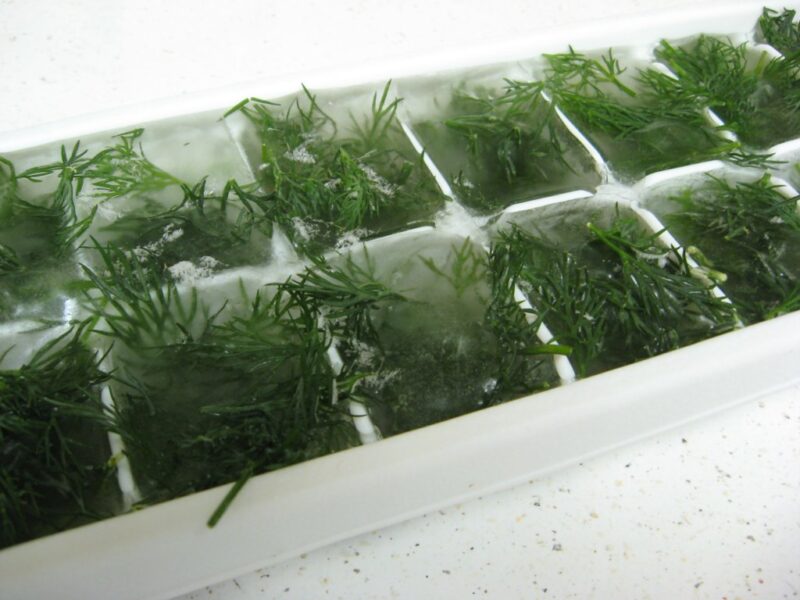
Freezing is a popular method that locks in the vitality of fresh herbs, allowing you to enjoy their flavors long after their harvest.
Chop and Freeze: Chop the herbs finely, and fill an ice cube tray two-thirds full with the herb mixture. Fill the remaining space with water or olive oil before freezing. Once frozen, transfer the cubes to a freezer-safe bag labeled with the herb name. This method is excellent for cooking, as you can simply toss a cube into soups or sauces.
Flash Freezing: For whole leaves, spread them on a baking sheet in a single layer and put them in the freezer for a few hours. Once frozen, transfer to an airtight container. This method works particularly well with mint and parsley, preserving their full flavor.
Drying: A Traditional Technique
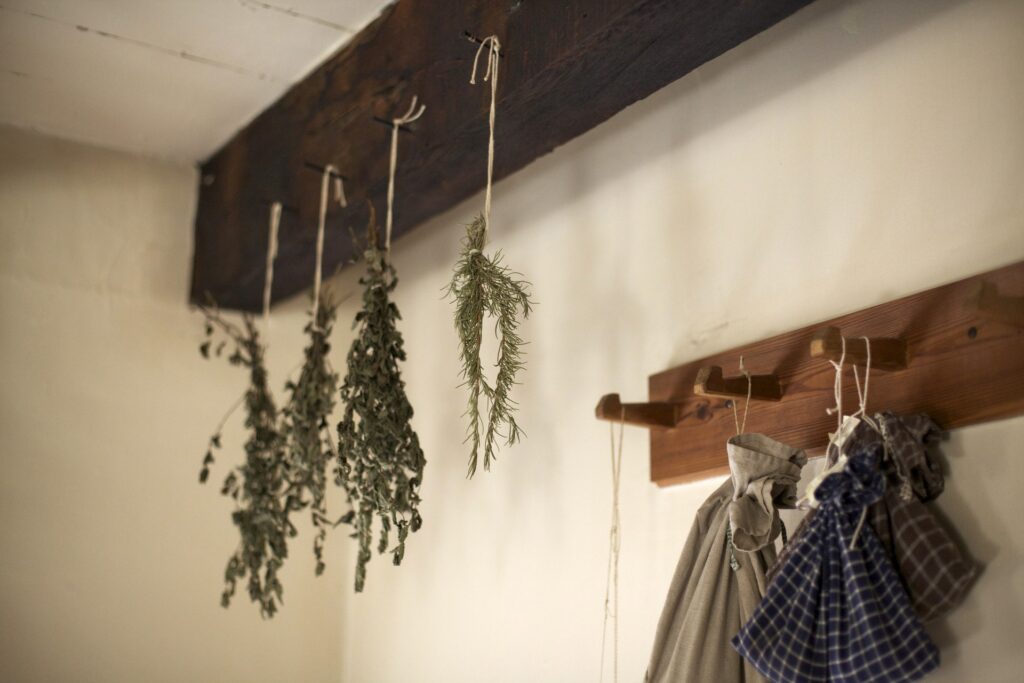
Drying offers a more traditional method of preserving herbs. This technique requires patience but provides a wonderful way to keep herbs for extended periods.
Air Drying: Bundle stems together and tie them with string, hanging them upside down in a cool, dark, and well-ventilated area. This allows the herbs to dry naturally. This method works best for hard herbs like thyme and rosemary.
Oven Drying: If you’re in a hurry, you can use your oven. Set it to the lowest temperature (around 180-200°F) and spread the herbs on a baking sheet. Keep the oven door slightly ajar to allow moisture to escape. Check every few minutes to avoid burning.
Dehydrators: If you frequently dry herbs, investing in a dehydrator can be worthwhile. Follow the manufacturer’s instructions for best results.
Herb Pastes: Capturing Flavor
Creating herb pastes is another flavorful way to preserve fresh herbs. A simple blend of herbs, oil, and salt results in a concentrated mix that can add punch to any dish.
Ingredients: Combine your preferred fresh herbs, garlic, and salt in a food processor, adding just enough oil to create a paste.
Storage: Transfer the paste into ice cube trays and freeze. This method provides a wonderful herbal base ready to be used in countless recipes.
Infusing Oils and Vinegars
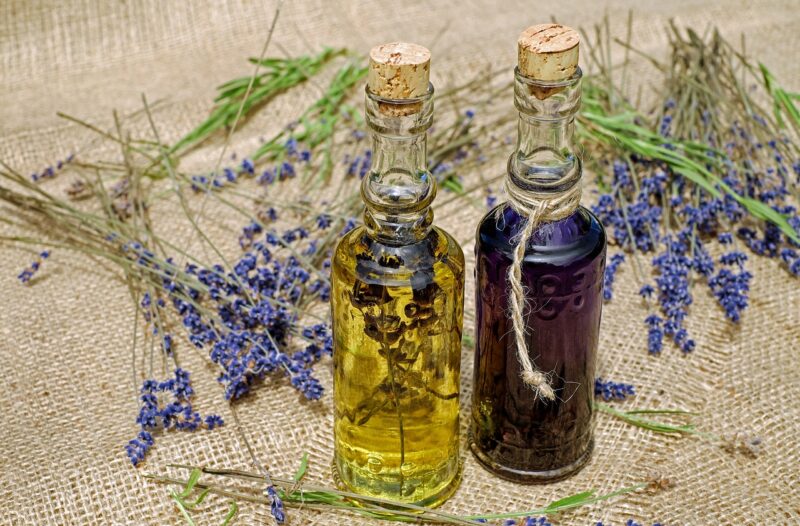
Herb-infused oils and vinegars allow you to preserve the essence of fresh herbs while creating delicious flavor enhancers that can be used in dressings, marinades, and drizzles.
Herb-Infused Oil: Place fresh herbs in a jar and cover them with olive oil. Seal the jar tightly and let it sit in a cool, dark place for a couple of weeks, shaking it occasionally. Strain out the herbs and store the oil in a dark glass bottle.
Herb-Infused Vinegar: Similarly, place fresh herbs in a bottle filled with vinegar, allowing them to steep for a few weeks before straining. This can add depth to salads and cooking.
Creating Pesto and Herb Blends
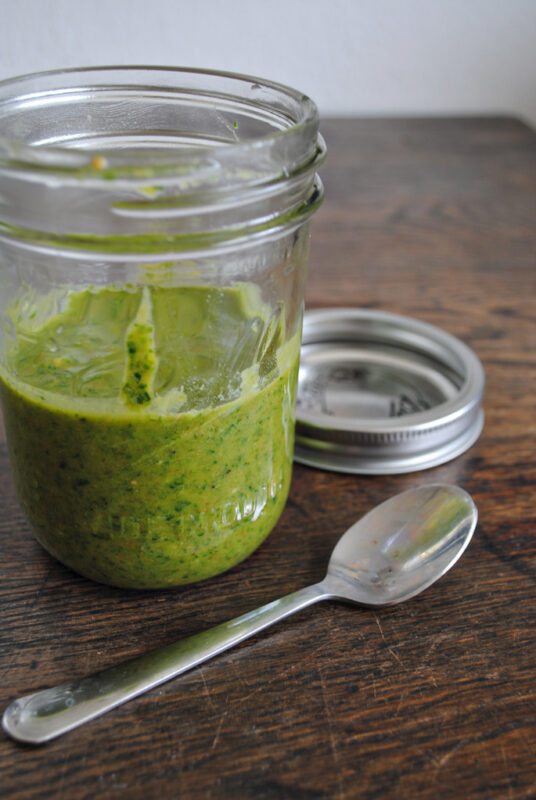
Pesto is a fantastic way to preserve an abundance of basil but can easily be adapted to use other herbs like parsley and cilantro.
Pesto Recipe: Combine 2 cups of fresh herbs, 1/2 cup of nuts (like pine nuts or walnuts), 1/2 cup of Parmesan cheese, 2 cloves of garlic, and 1 cup of olive oil in a food processor. Once blended, this can be refrigerated or frozen in smaller portions.
The Charm of Herb Salt
Herb salt is an excellent way to keep your flavorings handy while adding a fun twist to your meals.
Preparation: Mix your finely chopped fresh herbs with kosher salt in a 1:1 ratio. Spread the mixture on a baking sheet and allow it to dry. Once dry, store in an airtight container. This salt can season almost anything, adding a unique freshness.
Tips for Picking Herbs for Preservation
Selecting fresh herbs is key to successful preservation. Here are a few tips to ensure your herbs are top quality:
Select Fresh Herbs: Look for vibrant colors and healthy leaves. Avoid any wilted or brown leaves, as these can spoil the batch.
Harvest Wisely: If you’re growing your own herbs, try to harvest them in the morning when the oils are most concentrated.
Storing With Care: When purchasing or collecting herbs, avoid crushing them in your bag or basket to prevent bruising and damage.
The Joy of Using Preserved Herbs
Now that we’ve covered various preservation methods, the next step is to enjoy them! Using preserved herbs can bring a sense of nostalgia and warmth to your cooking.
Experimenting in the Kitchen: Incorporate your preserved herbs into dishes, from soups and stews to marinades and dressings. You may discover new flavor profiles that excite your palate.
Gifting Homemade Treats: Consider giving herb-infused oils or jars of dried herbs as gifts. They make thoughtful presents for friends and family who appreciate culinary creativity.
Fostering Culinary Creativity: Keeping a variety of preserved herbs handy opens the door to experimenting with flavors, combining dried herbs with spices or using infused oils for drizzling.
Sustainable Practices in Herb Preservation
In today’s world, sustainability should guide our culinary practices. Preserving herbs can help reduce food waste and promote self-sufficiency. Consider these practices:
Use Seasonal Herbs: Focus on utilizing herbs that are currently in season to ensure you’re getting the freshest flavors possible. This not only enhances your cooking but also encourages a connection with local agriculture.
Create a Seed Bank: When preserving herbs, consider collecting seeds for future planting. This fosters a cycle of growth and provides you with fresh herbs for future seasons.
Eco-Friendly Containers: Use glass jars or reusable containers for storage rather than single-use plastics. This small change can significantly impact reducing waste.
Closing Thoughts
Preserving fresh herbs is an enriching experience that connects you to your culinary roots, your garden, and the moments shared around the dinner table. Whether you’re a novice cook or a seasoned chef, knowing how to keep herbs flavorful and vibrant enhances your cooking experience. Each method we’ve discussed serves as a tool you can wield to unlock the true essence of your ingredients.


